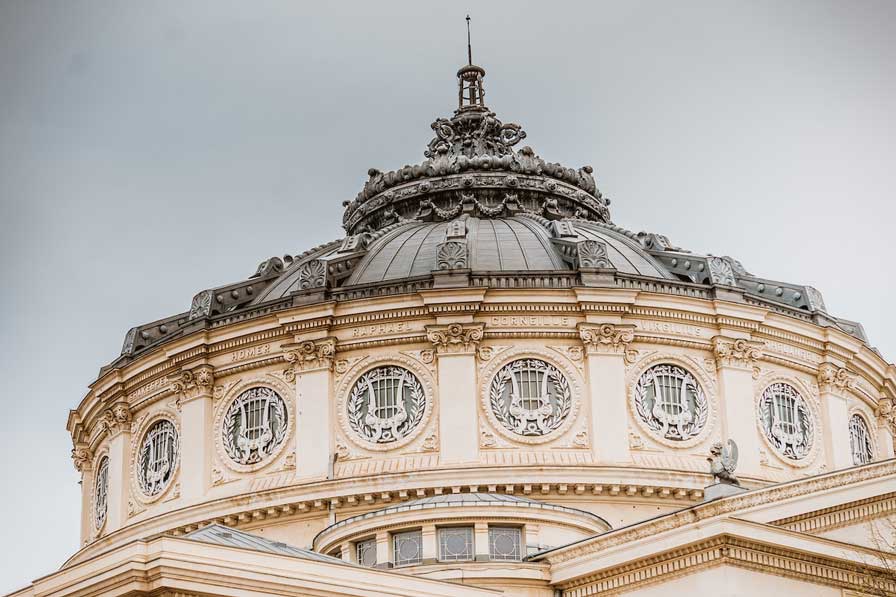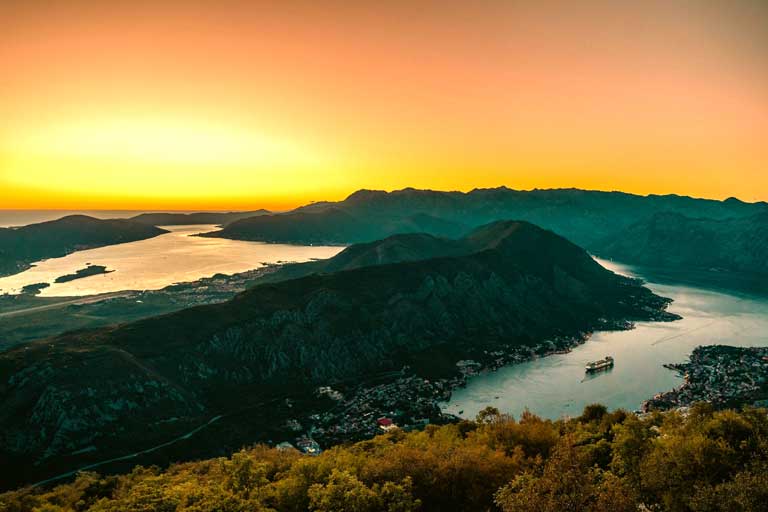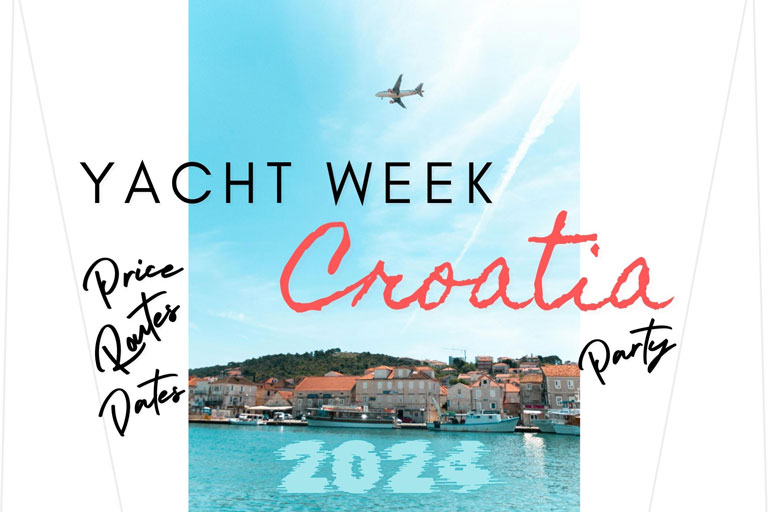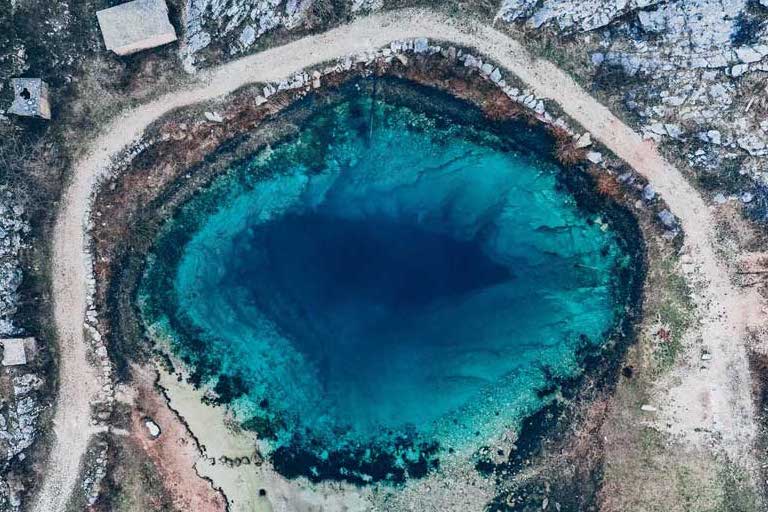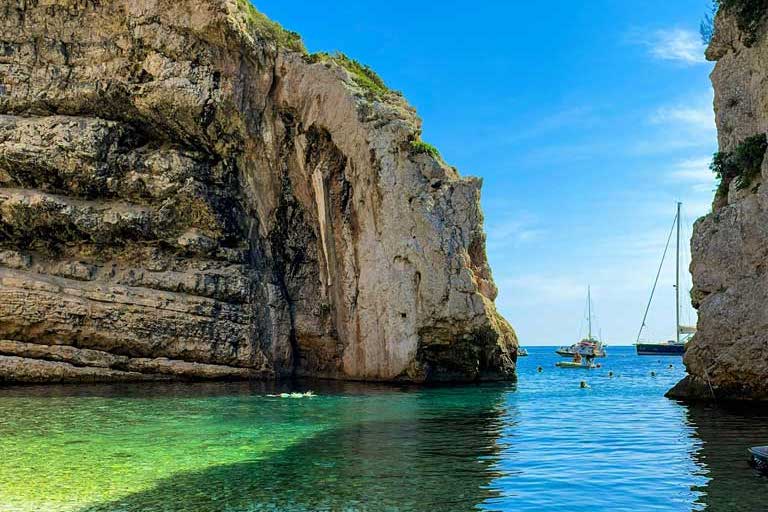Cities in Romania — there are many of them worth visiting, but three standout — Sighisoara, Brasov, and Bucharest. Romania is a country with picturesque hills, quaint medieval towns, magnificent castles, and ancient monasteries.
Cities in Romania to Visit
Roaming around these major cities in Romania will take you on an adventure filled with churches, market squares, watchtowers, street vendors, and restaurants. Let’s visit in Romania Sighisoara, Brasov, and Bucharest, discover amazing sights, and find places to stay.
Sighisoara – One of the Best Cities in Romania to Visit
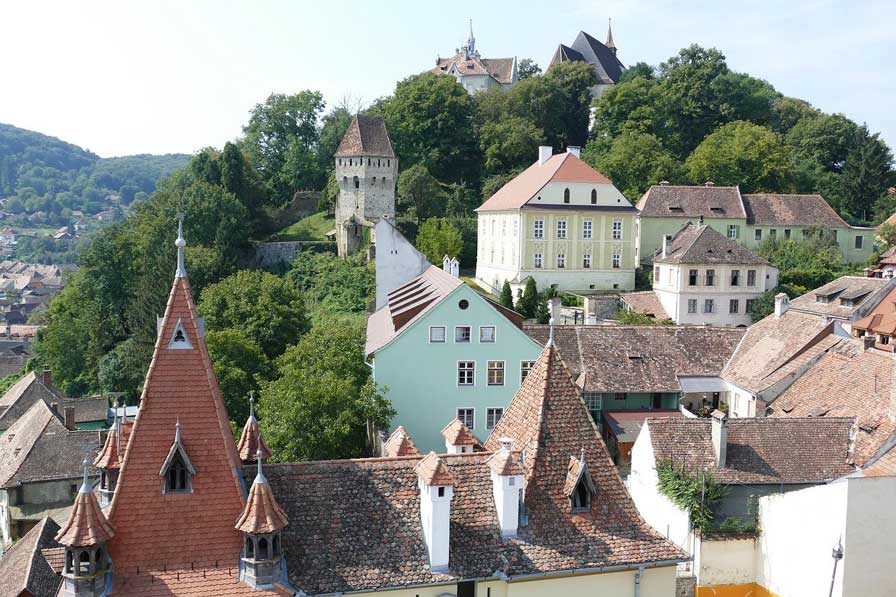
The medieval town of Sighisoara, was a former Roman settlement, which was later advanced by the Dacians. Sighisoara has been listed as a UNESCO World Heritage Site since 1999.
You might have heard of its famous past resident, Vlad the Impaler who was born in the town and inspired the well-known novel “Dracula” by Bram Stoker.
The town boasts pastel-stained burgher residences, winding cobbled alleyways, a 500-year-old church, and a Clock Tower built in the 14th century. All the town’s ancient and historic wonders are confined within its citadel walls.
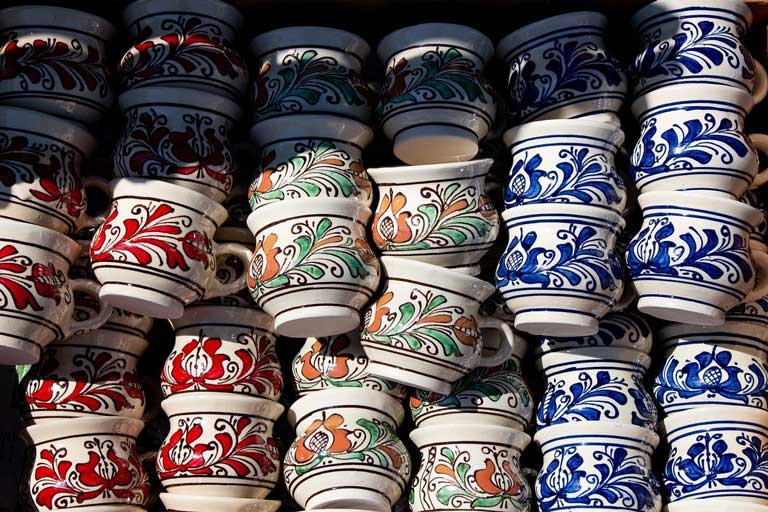
The citadel walls, dating back to the 14th century, protected the town from attacks by the Turkish forces. When you visit Sighisoara you will be enamoured by its captivating sites, atmospheric restaurants and cafes, wonderful artisan shops, and the Sighisoara Citadel.
Sighisoara Citadel
As the only inhabited European medieval fortress, Sighisoara Citadel earns a special mention. The citadel has witnessed several tragedies throughout history. From rebellions, invasions, fires, executions, to witch trials, the citadel has lived through its share of tragedy.
It all started with German colonists settling in Sighisoara in the 12th century to protect the Eastern borders of the kingdom. Since then, the city has seen tragic times but survived all of them to become a UNESCO site and place of interest among tourists.
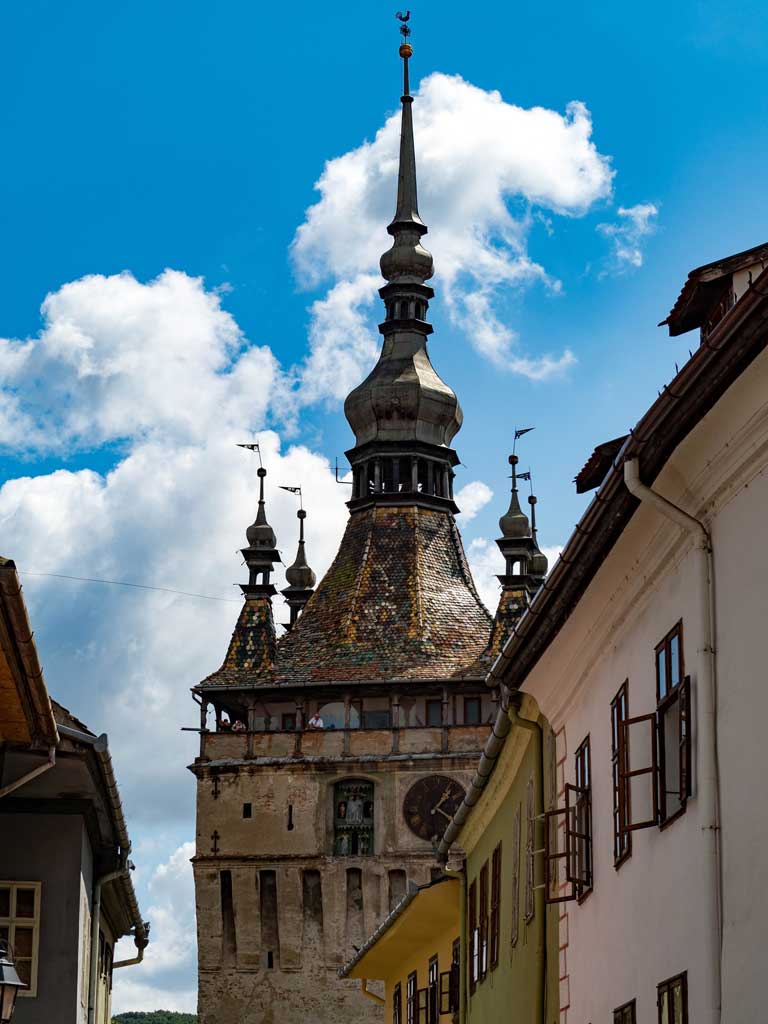
It’ll fascinate you to know that building defence towers in the Sighisoara Citadel was a tradition carried out by different craftsmen. In total, the city housed 14 towers but only 9 remain. Out of all the towers, the Clock Tower has garnered the most attention.
The Clock Tower served as a jail for captives sentenced to death. Presently, the tower has been turned into a museum, displaying military and weapons equipment, including a torture chamber.
Sighisoara Medieval Festival
When strolling through the city’s unchanged landscape, it is like travelling to the past. You can relive its history by booking a tour or visiting the Sighisoara Citadel in July on the last weekend to attend the Sighisoara Medieval Festival.
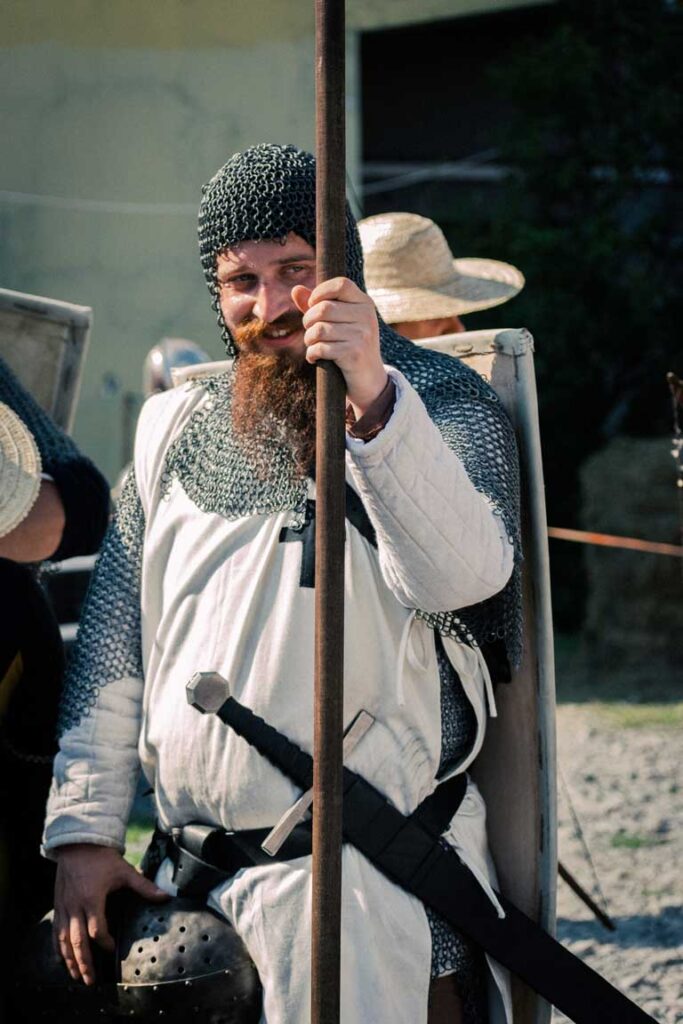
The festival became a yearly celebration when 13 people aspired to perform on the citadel’s streets. While watching their performances, you see the past play out. At the festival, you’ll see dancers and musicians in medieval costumes putting on a delightful show.
Other exciting things happening at the festival include storytelling, medieval cooking, poetry readings, weapon and picture exhibitions, and also sword fights.
Besides towers and festivals, you can tour churches and museums in the cities of Romania.
Churches in Sighisoara
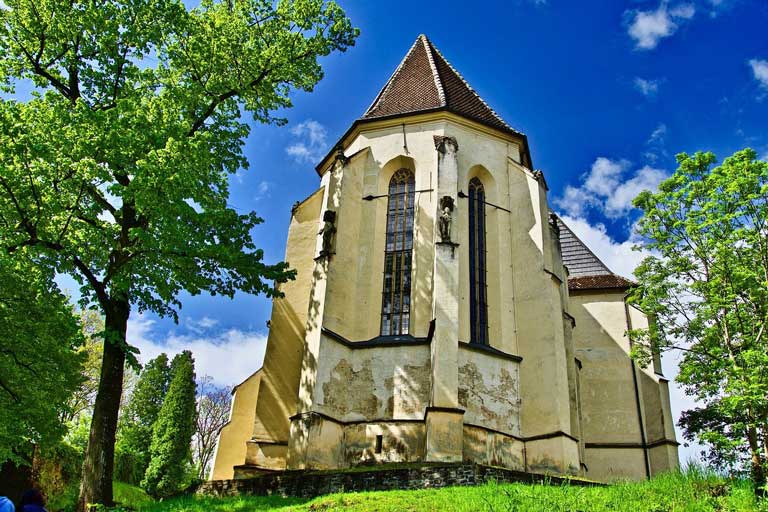
You can visit the Church on the Hill (Romanian: Biserica din Deal), which is a Gothic-themed church, displaying the remains of frescos. However, it does require a lot of climbing — 175 steps to be exact!
Other churches to tour include the Lepers’ Church and Church of Saint Mary of the Dominican Monastery. Next up are the museums.
Museums in Sighisoara
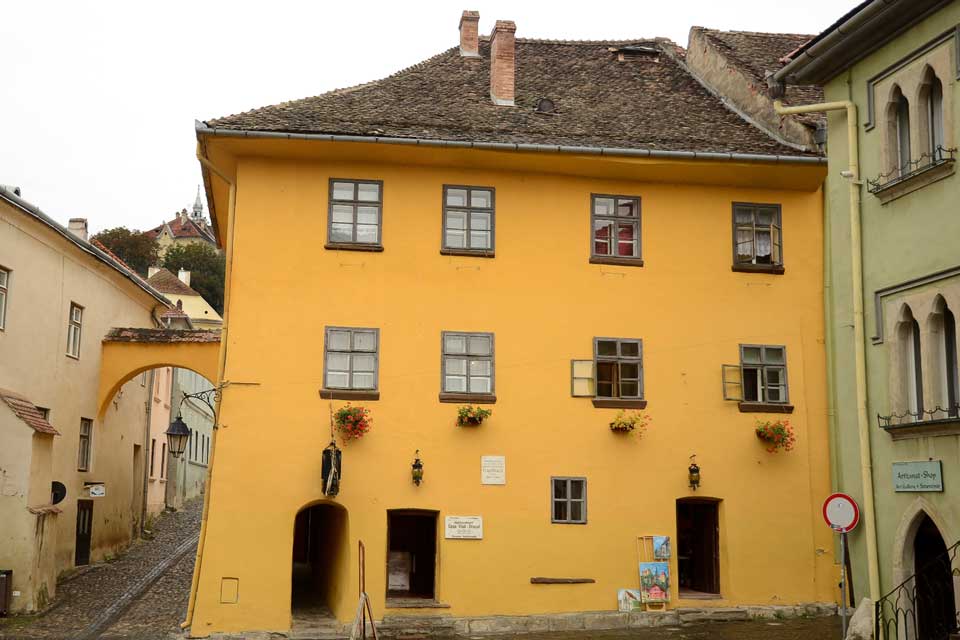
Weapon’s Museum is a frequently visited place in Sighisoara. Besides its excellent exhibition, the museum is popular because it is located in Vlad the Impaler’s home.
While you are enjoying the cities of Romania, you will also need a place to stay.
Hotels in Sighisoara
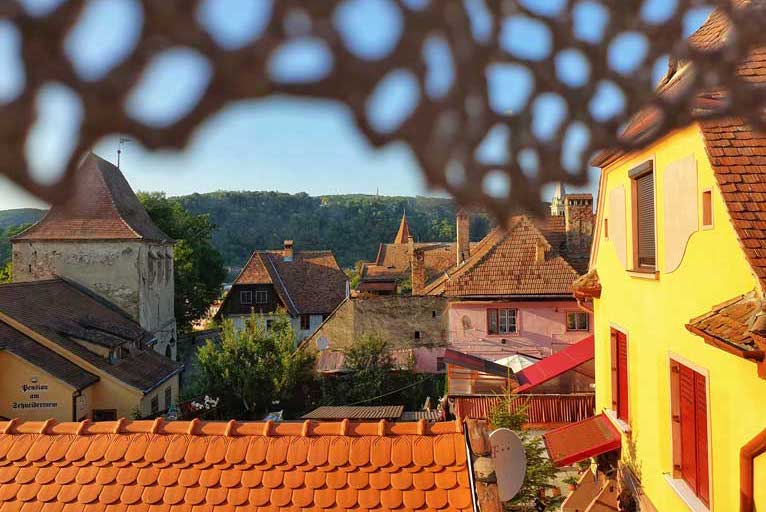
To visit Sighisoara, you can travel via two airports in Romania – Targu Mures Airport and Sibiu International Airport.
Fronius Boutique Residence
Fronius Boutique Residence is a popular place to stay for couples. The rooms are equipped with state-of-the-art amenities. You can see the view from the sun terrace. If you need to travel to a tourist destination, the hotel offers free pick-up and drop-off from the train station.
Some nearby places to visit include the 64-metre tall Clock Tower and Saschiz Fortified Church. The hotel offers a breakfast buffet but for dinner and drinks, you can visit Restaurant Sighisoara and Jo Pub.
Casa Bertha
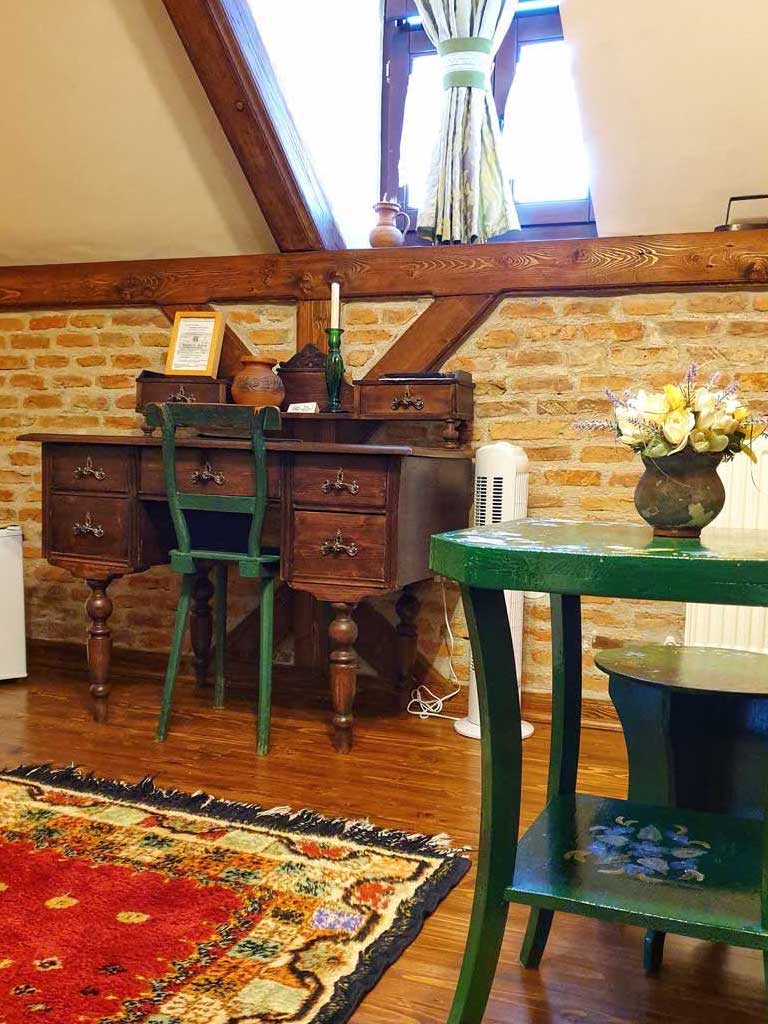
Casa Bertha, a medieval house, features a décor that communicates the essence of Sighisoara. The home’s convenient location puts it near several tourist attractions such as the Saschiz Fortified Church. For foodies, this place is a dream come true because it’s near several restaurants such as the House on the Rock, Medieval Café, Casa Krauss, Altepost Gasthaus, and more.
V. Apartment
V. Apartment is a one-bedroom apartment overlooking captivating views of the city. Leave the apartment to find yourself staring at the amazing Saschiz Fortified Church. You can hop on the train to visit the city of Fagaras and Fagaras castle. While in Sighisoara, you can dine at the Voynich and Michelangelo.
Casa Georgius Krauss Sighisoara
Casa Georgius Krauss Sighisoara is located in a 16th century UNESCO protected building and used to house the famed historian Georg Krauss. The uniquely designed rooms with medieval styling feature advanced facilities.
Although there are several restaurants nearby, the hotel offers local and international cuisine served on its outdoor and indoor terraces. The fabulous landmarks near the hotel include the Clock Tower and the Church from the Hill. The hotel in Sighisoara sends a shuttle to pick up guests from the Sibiu International Airport.
Brasov in Transylvania – the tantalising cities of Romania
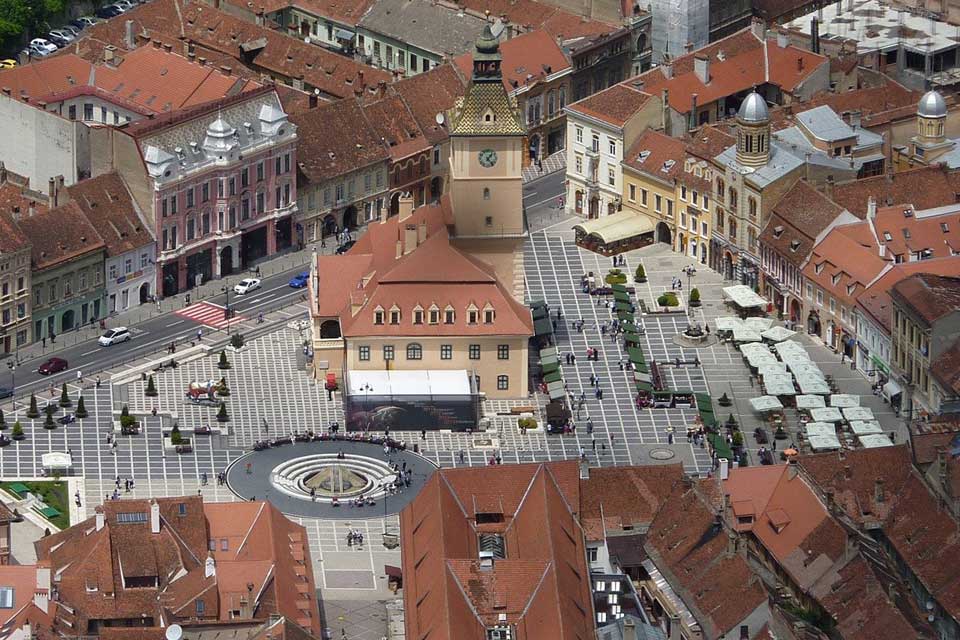
Brasov, Transylvania has established itself as one of the most well-preserved cities not only in Romania, but Europe as well. If you are planning on visiting one of Transylvania’s cities in Romania, Brasov is your next hot spot.
The town, encircled by the impressive Carpathian Mountains, became home to the Teutonic Knights at the start of the 13th century.
The 13th century saw the German-Saxon Knights building a medieval citadel in Rasnov, near Brasov. Originally built of wood, later on the citadel was to be replaced by the one still standing.
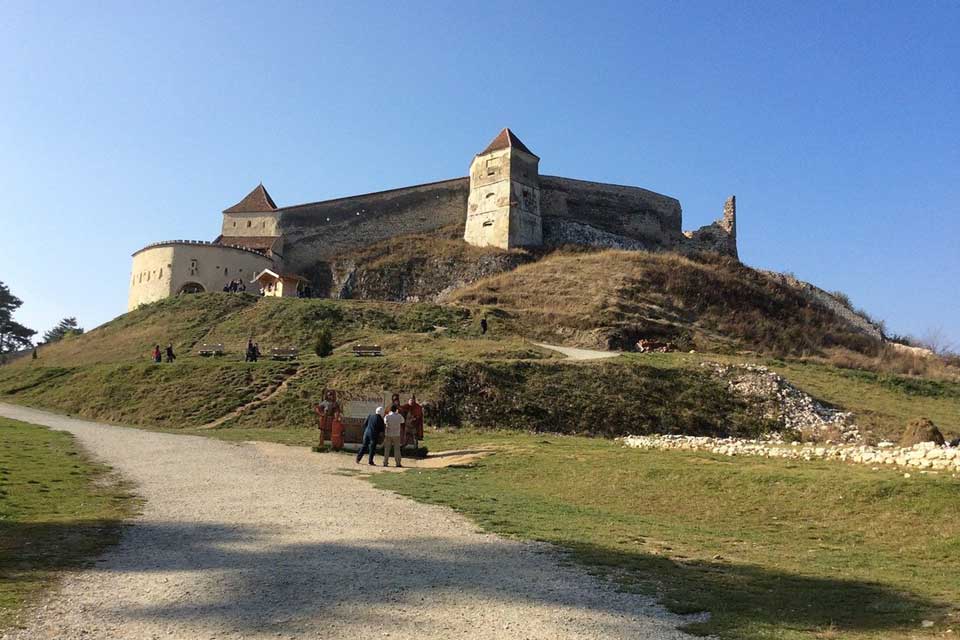
The 14th-century citadel boasts robust fortified walls, defence gates, and enormous towers. Soon, the citadel became a flourishing centre for trading due to its ideal location. Moreover, the city’s trade routes allowed them to trade with Western and Central Europe and the Ottoman Empire.
Around that time, the construction of St. Mary’s Church or the Black Church commenced.
Brasov Black Church
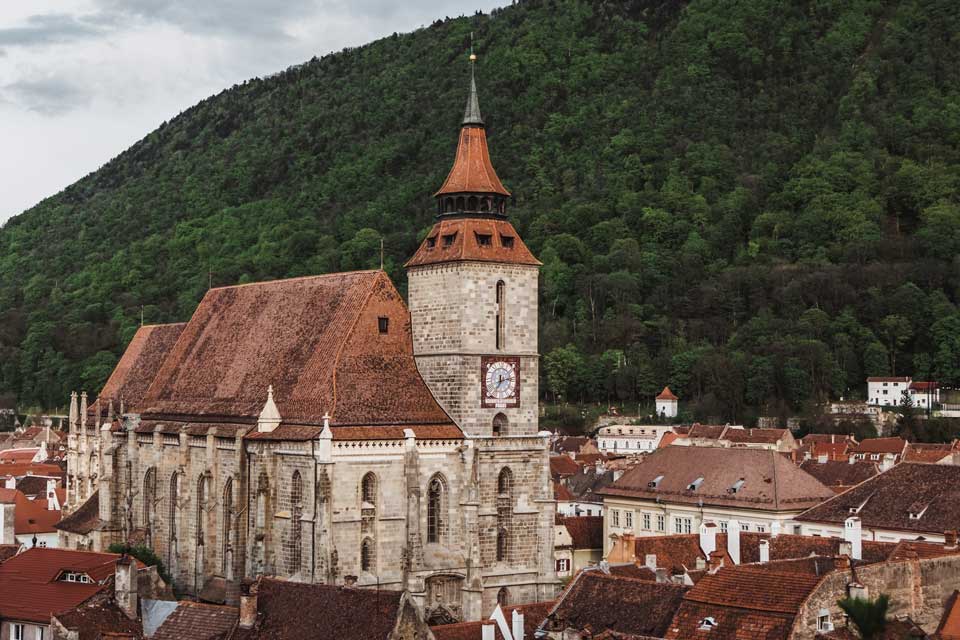
The church’s Gothic-inspired architecture and elements stand out from other structures. The edifice survived several invasions and attacks and was gravely damaged by a fire in 1689. After the fire, the walls turn black hence earning it the nickname, the Black Church.
As the largest Gothic and medieval church between Vienna and Istanbul, the edifice towers over the Old Town of Brasov. With its red-orange roofs, the church is a marvellous structure with a striking interior being used as space to exhibit cultural treasures such as Anatolian carpets collected between the 15th and 17th century.
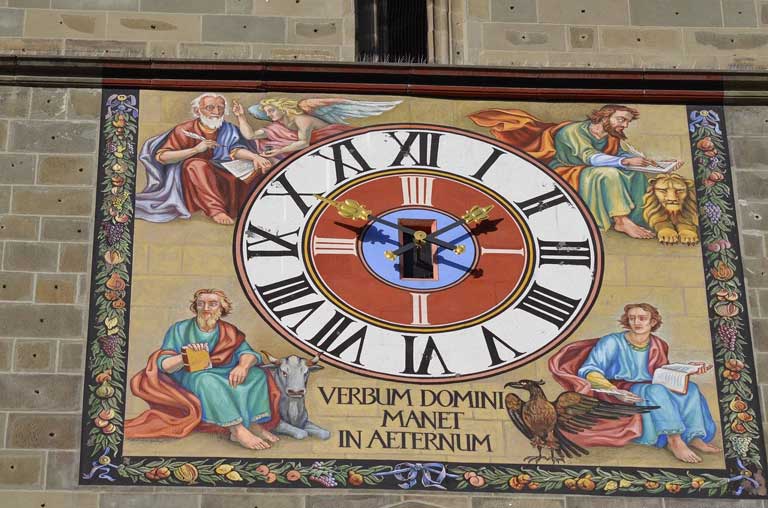
Inside the church, you’ll find a 19th-century pipe organ, which still produces melodious musical notes and tunes. If you want to hear it play, you can attend a concert that occurs during the week at the church. The church’s exterior is equally as stunning as its interior.
The church’s 6-ton bell is the largest in the country. Statues, made from friable grit, adorn the outside of the church.
Another interesting building to visit is Dracula’s Castle, a castle in Bran, situated 25 km from Brasov town.
Bran Castle
Bran Castle is among the most iconic and recognisable buildings in Transylvania. The famed castle inspired novelist Bran Stoker’s description of Count Dracula’s home in his novel, “Dracula.”
The Medieval fortification shares several similarities with the castle mentioned in the book, hence the nickname, “Dracula Castle.”
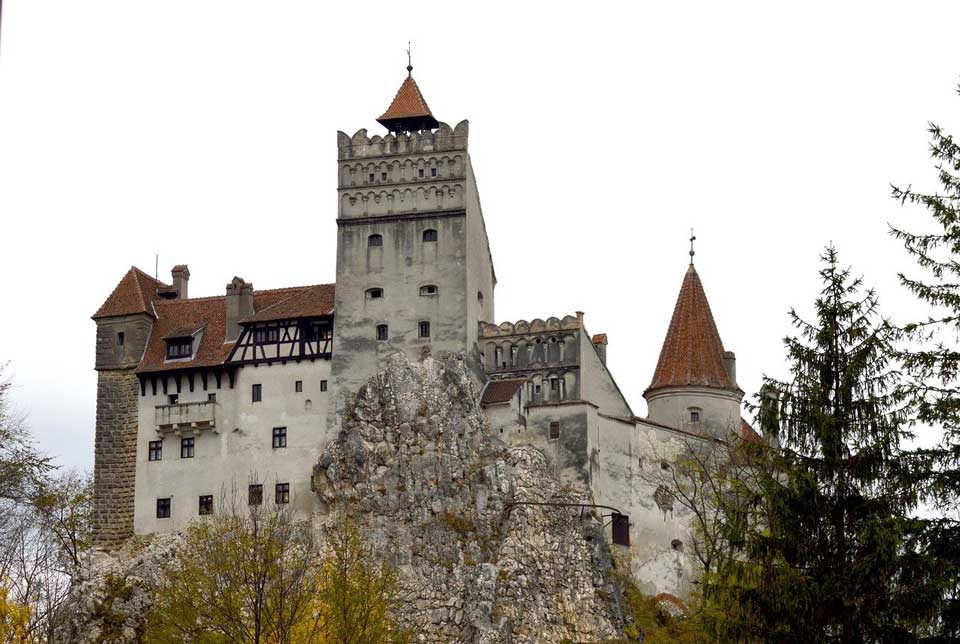
The imposing palace is not just an exquisite work of art, but it’s filled with myths and legends. According to one tale, Vlad the Impaler was imprisoned in the Dracula Castle. The author created the character Count Dracula after Vlad.
However, the folklore doesn’t reveal the fortification’s true history. The credit for its beautifully decorated interior décor goes to its previous owner, Romania’s Queen Marie. It was gifted to the Queen as thanks from the Romanian people for her efforts in uniting Romania.
Before the Queen and her family resided there in 1920, the castle was used as a fortress. Erected between 1377 and 1388, it was built on a strategic location overlooking a mountain pass between Wallachia and Transylvania.
Queen Marie’s descendants now own the castle. After her passing, Princess Ileana converted castle Brasov into an infirmary during WWII. In 1948, the Communist regime acquired the fortress, however, in 2006 it was returned to the Queen’s family.
You can visit the Dracula castle inside by booking an online ticket. Ticket to visit will cost you €5. To see Bran castle interior will be something you will not regret.
Presently, Bran castle hosts a museum honouring Queen Marie and has become a venue for events and tours. In case you want a destination wedding, you can book the castle as your wedding venue.
Strada Sforii

Strada Sforii or “Rope Street” was created in the 15th century to allow firemen to pass through major streets. The street’s ideal location puts it near Black Church and Piata Sfatului (the main square) — two famous tourist hotspots in one of the top cities of Romania.
The street measures 80 m long and varies in width ranging from 111 to 135 cm. In fact, Strada Sforii is Europe’s third narrowest pathway. At the street’s narrowest point, you can touch the two walls on both sides of the street, connecting Cerbului Street and Poarta Schei Street.
In case you will not be able to view all these intriguing sights in one day, you will need to book a hotel in Brasov. We have prepared a selection of hotels in Brasov for you.
Hotels in Brasov, Romania
Ka’yana Apartments
Ka’yana Apartments is located in the centre of Brasov’s Old Town. It’s near numerous historical places such as the Black Church, the Black Tower, and Strada Sforii. You can explore your surroundings by hiking, skiing, and cycling. The luxurious restored apartments are equipped with a kitchen, a living room, and a dining area.
You’ll also find restaurants and cafes around the hotel. You can catch a flight back home from the Sibiu International Airport.
Arce Boutique Hotel
Arce Boutique Hotel’s location will not disappoint. Landmarks, parks, and restaurants are
within walking distance. They serve a delicious continental breakfast each morning and you can enjoy the panoramic view from the terrace.
The notable landmarks near the hotel are the Strada Sforii and Black Church. Go ziplining at the Adventure Park Brasov and swim in the pools at Aquatic Paradise. You can see Brasov from the sky by taking a ride in the Tampa Cable Car.
They send a private shuttle to pick guests from Bucharest’s Henri Coanda International Airport.
SCHUSTER Boarding House
SCHUSTER Boarding House has fully-equipped rooms and apartments that are perfect for families and couples. They come with a terrace, offering spectacular views. You can enjoy the boarding house’s bar, garden, and lounge. You can visit the White Tower, Black Church, and Brasov Neolog Synagogue. Have coffee at the Nola Coffee Shop and dinner at the Sub Tampa.
Wood House Republicii
Wood House Republicii is a great place to stay for couples with its perfect location, serene views of the Republicii pedestrian street and Tampa Mountain. Additionally, you will come across numerous landmarks, dining options, and shops nearby. Also see the selection of regional art at the Brasov Art Museum or ski at the Bradul ski slope. You can ride the Tampa Cable Car to take in the panoramic views of the city. The closest airport is Henri Coanda Airport.
Bucharest
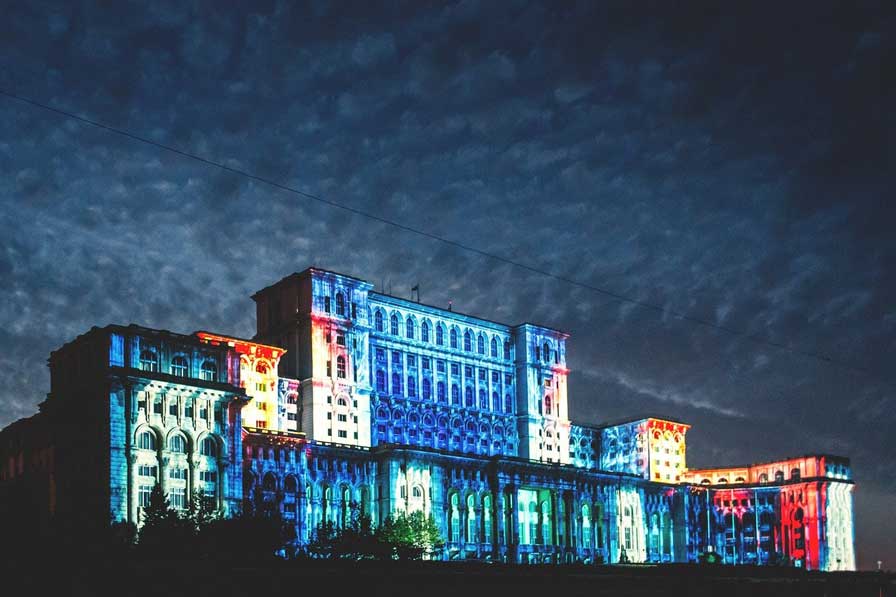
Bucharest is the capital of Romania and its largest city. The city is an industrial, cultural, and financial hub. Situated in the southeast region of Romania, it sits along the Dambovita River and north of the country’s border and the Danube River.
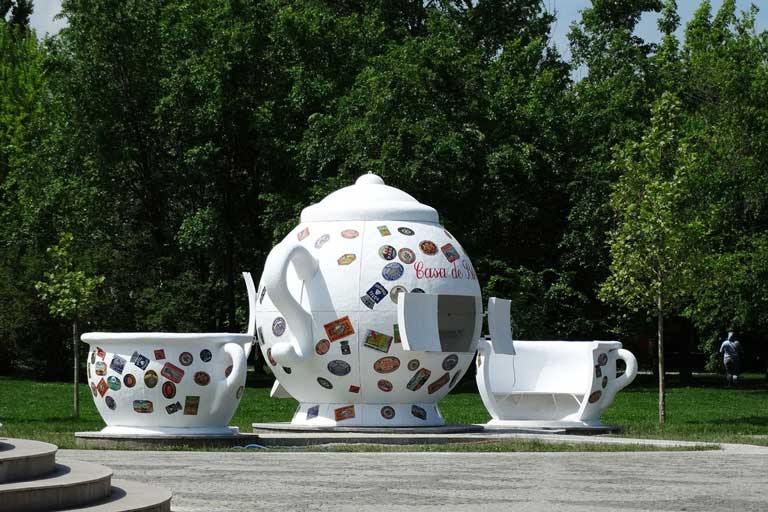
Known as the art, media, and cultural hub, the capital city of Romania has become one of the main stops for tourists travelling to the country. Its architecture boasts an eclectic combination of Art Nouveau and neoclassical, art deco and Bauhaus, communist Romania, and contemporary elements.
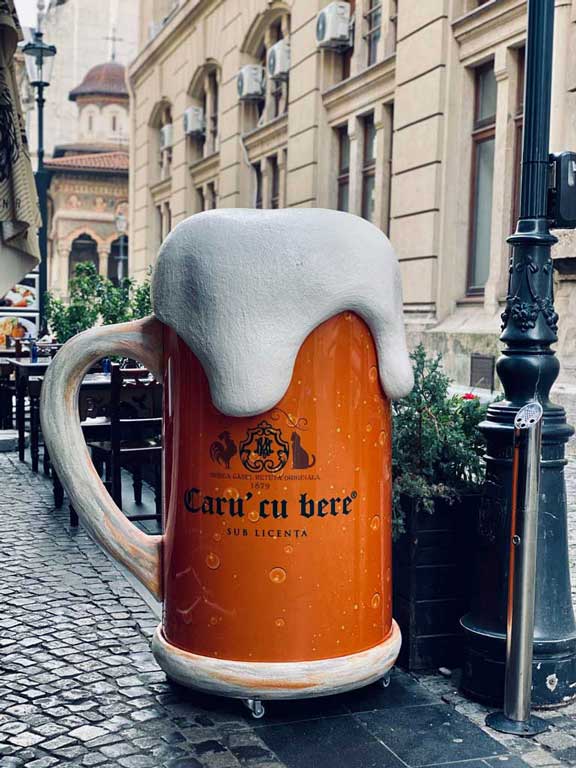
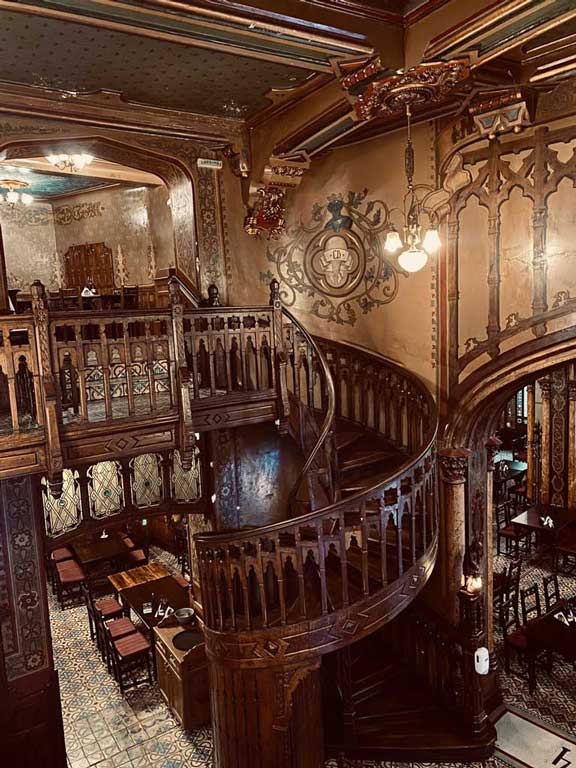
Its historical and sophisticated structures and buildings have caught the eye of numerous people over the years, thus it earned Bucharest’s nickname, “Little Paris.”
Helping to put the city on the map is the People’s Salvation Cathedral or Romanian Cathedral.
Bucharest Hosts The Largest Cathedral in the World
After constructing the world’s largest civilian building – the Palace of Parliament – Romania went further and built the world’s largest cathedral. The Romanian Cathedral is also the tallest (135 m) Orthodox Cathedral.
The contemporary cathedral honours the saviour of the Romanians, St. Andrew, and the Ascension of Christ.
You can find the grand cathedral in the centre of Bucharest. However, the cathedral’s construction is ongoing with the chapel completed and the final touches and paintwork set to complete by 2025.
Here’s why you need to visit the People’s Salvation Cathedral:
- The architecture combines traditional and contemporary design elements.
- Tesserae is made from gold and mosaic.
- It displays the world’s largest mosaic collection.
- It features 28 bronze doors adorned with iconography representing saints.
- Its perfect gold polished dome design will make it the world’s third flawless dome.
- The cathedral owns the world’s largest 25.2-ton free-swinging bell.
- The cathedral’s iconostasis honours the Kingdom of Heavens and it took 10 months and 45 people to paint it.
- The church will feature two underground galleries that can fit up to 15,000 people.
If you want to visit a landmark from the past, you will enjoy seeing the CEC Palace and Museum.
For Romanians, ancient architecture has a deeper meaning, as every building conveys a story. Seen as national symbols, the country works to preserve them and showcase their art, culture, and history through them. One such precious piece of architecture is the Palace of the Savings Bank or CEC Palace.
CEC Palace
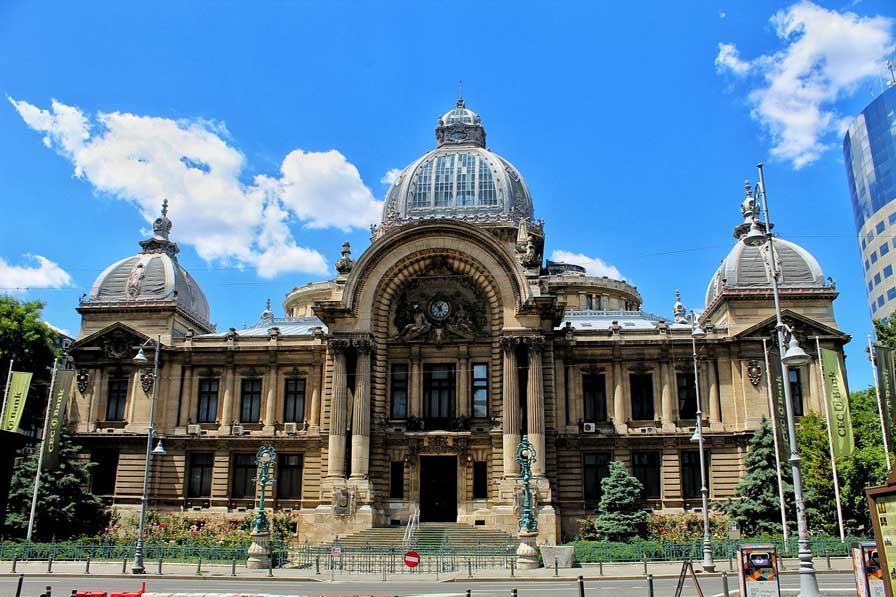
CEC Palace’s architecture, with its diverse design elements, takes you back to Romania in the 19th century. Like every great building, there lies an interesting story. Before there was CEC Palace, there were the churches of Wallachia built in the exact location.
The Church of the Monastery was one of Wallachia’s oldest and most renowned churches. Established in the 16th century, they used wood to create the church. Sadly, the church started to show signs of wear and tear but was later renovated in 1703.
They rebuilt the church in the Brancovenesc theme. However, the church wasn’t maintained and was demolished in 1875. In its place, they built the CEC Palace, with the building construction starting on Jun 8, 1897. The palace’s neo-classical theme and French influences are evident in its design. The 19th-century building’s interior features geometric shapes combined with a natural stone mosaic.
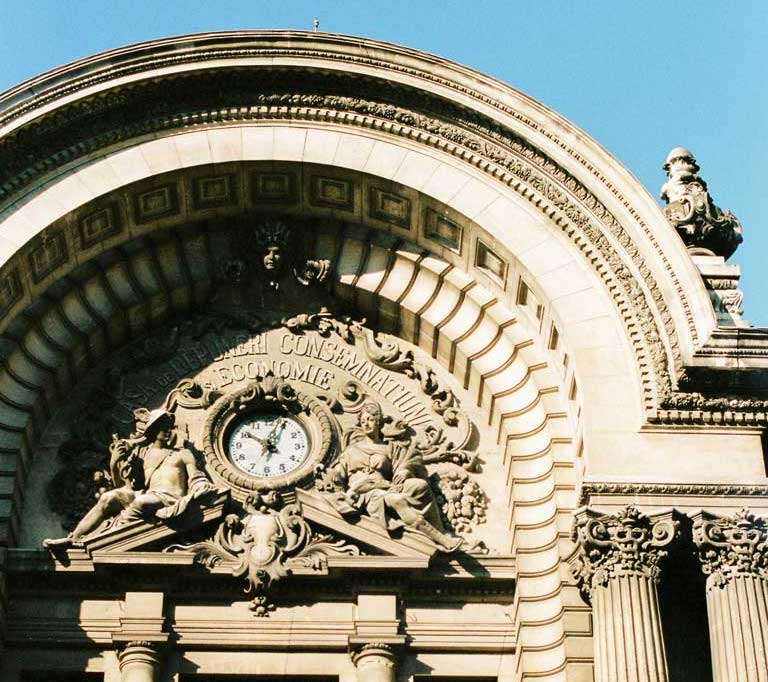
CEC palace boasts white marble stairs, mural paintings, and eye-catching chandeliers. They used Dobrogea marble and massive stone — both local materials — to construct the palace. For the main dome, they used metal and glass. The palace also features two Greek deities, Mercury and Demeter, placed on both sides of the clock.
Unfortunately, you can only admire the exterior, as presently, the CEC Palace isn’t open to the public. Instead, you can visit the Open Air Museum in Bucharest – Dimitrie Gusti.
Dimitrie Gusti National Village Museum
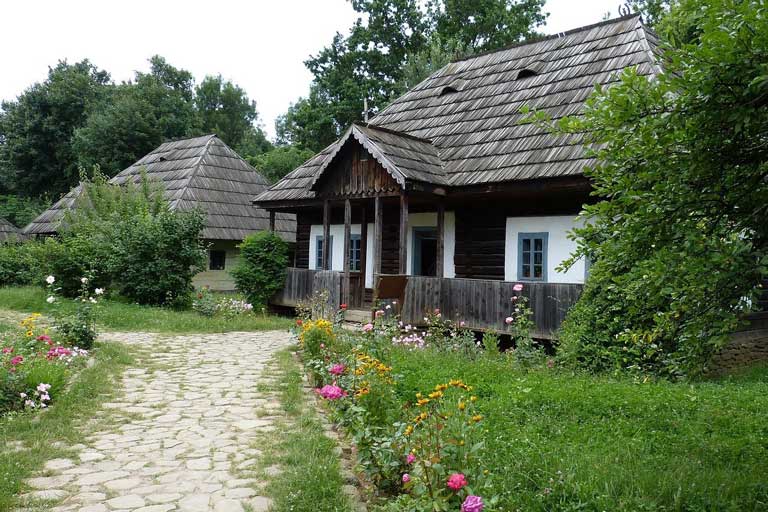
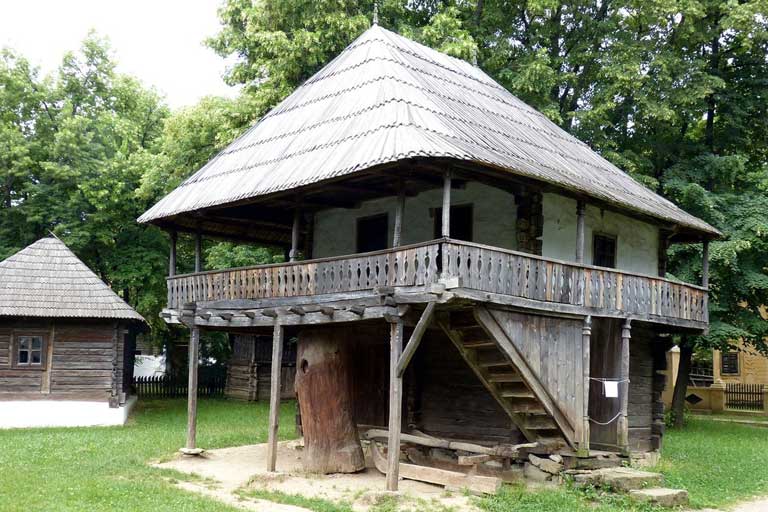
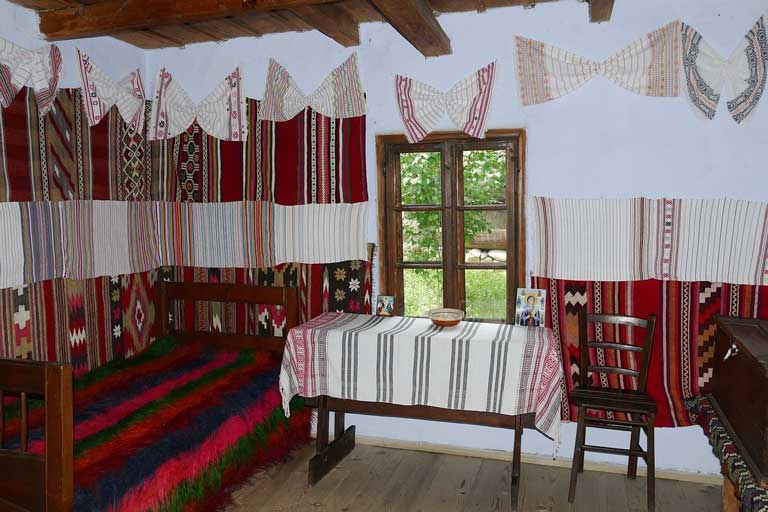

The National Village Museum is located in Bucharest’s King Mihai I Park. Tickets to access the museum vary from 2€ to 6€ (8 Lei to 30 Romanian Lei)
At the museum, you will be acquainted with Romanians’ village life back in the day.
Hotels in Bucharest
Here are several accommodation options you can consider to stay in Bucharest.
Bucharest Pedestrian Old Town 3 Bedrooms by Orchid Garden
Bucharest Pedestrian Old Town, situated in the city’s Sector 3 district, puts you near all the hottest tourist attractions. The three-bedroom accommodation comes with a fully-equipped kitchen. You can schedule guided tours and day trips with the help of the apartment’s owner, Christina, who is an authorised tour guide.
Notable attractions in the area include the Bucharest National Theatre, the National Museum of History, and Cismigiu Gardens. You can dine in at one of the many nearby restaurants and cafes. They offer a private shuttle service from the Coanda International Airport.
62 Steps to Petit Bonheur
62 Steps to Petit Bonheur is near several must-see attractions such as the Patriarchal Cathedral, Stavropoleos Church, Cismigiu Gardens, Revolution Square, the National Museum of Art of Romania, and the Romanian National Opera.
The fully-equipped and furnished room is thoughtfully and artfully decorated. It’s close to the metro and bus destination and Henri Coandă International Airport. The two nearby dining options are the Il Peccato and Gelateria caffetteria Emilis.
USSR Apartment
USSR Apartment is a one-bedroom apartment that has been a hit with couples and parties of two. A few metres away from the apartment, you’ll discover the Revolution Square, the Bucharest National Theatre, Museum of Art Collections, Patriarchal Cathedral, and more.
The stylishly decorated apartment offers guests an array of amenities and breakfast options. Two nearby restaurants are Stadio and Intercontinental. You can take a taxi to reach the apartment from Henri Coandă International Airport.
The Mansion Boutique Hotel
The Mansion Boutique Hotel, situated in the centre of Old Town, features uniquely decorated rooms. Step into a minimalist, eclectic, Moroccan, or French-themed room. Outside the hotel, discover several landmarks such as the Old Princely Court, Carol Park, and Stavropoleos Church.
Go on a shopping spree at the Unirea Shopping Centre. You can either explore the dining options outside or dine in at the on-site Italian restaurant, Peccato. You can travel via the Piata Unirii Metro Station or the Henri Coandă International Airport.
HOLT Old Town Suites with Balcony
HOLT Old Town Suites, situated in the city’s Sector 3 district, is a pet-friendly accommodation. The rooms feature a patio and balcony to admire the picturesque views. The suite is only a few metres away from the Patriarchal Church, Old Princely Court, National Museum of Romanian History, and Stavropoleos Church. You can travel in and out of the city and country via Henri Coandă International Airport.
Concorde Old Bucharest Hotel
Concorde Old Bucharest Hotel, situated in Old Town, features décor inspired by the neoclassical era. Each room offers fabulous views of either the city or the river. The hotel has a garden, sun terrace, and breakfast buffet. The hotel can even assist you in organising trips. Around the hotel, there are several coffee shops, restaurants, pubs, and nightclubs.
It’s also near numerous sites such as the Palace of Parliament, Cismigiu Gardens, and Bucharest Arch of Triumph. The two airports closest to the hotel are Henri Coandă International Airport and Bucharest International Airport.
Once you have explored the entirety of Bucharest, you can visit Brasov for another adventure.
Bucharest to Brasov
You can travel from Bucharest to Brasov by bus, train, taxi, and car. Bucharest Brasov distance is 190km.
- Bus – Duration: 2 h and 40 min. Cost: 18€ to 28€.
- Train – Duration: 2 h and 20 min. Cost: 14€.
- Taxi – Duration: 2 h and 30 min. Cost: 65€ to 110€.
- Drive – Duration: 2 h and 30 min. Cost: 28€ to 40€.
Prices updated April, 2024.
Car Rental Bucharest
To rent a car, you need a driving license, passport, and car insurance. If renting a car to drive to another city, go on a weekday to avoid the weekend traffic jam.
Along the way, you can stop at the Sinaia (city and ski resort), Caraiman Monastery (there’s also a 4 km cable car there), and Timisul de Jos or the Seven Ladders Canyon to hike and see the waterfalls.
Cities in Romania Uncovered
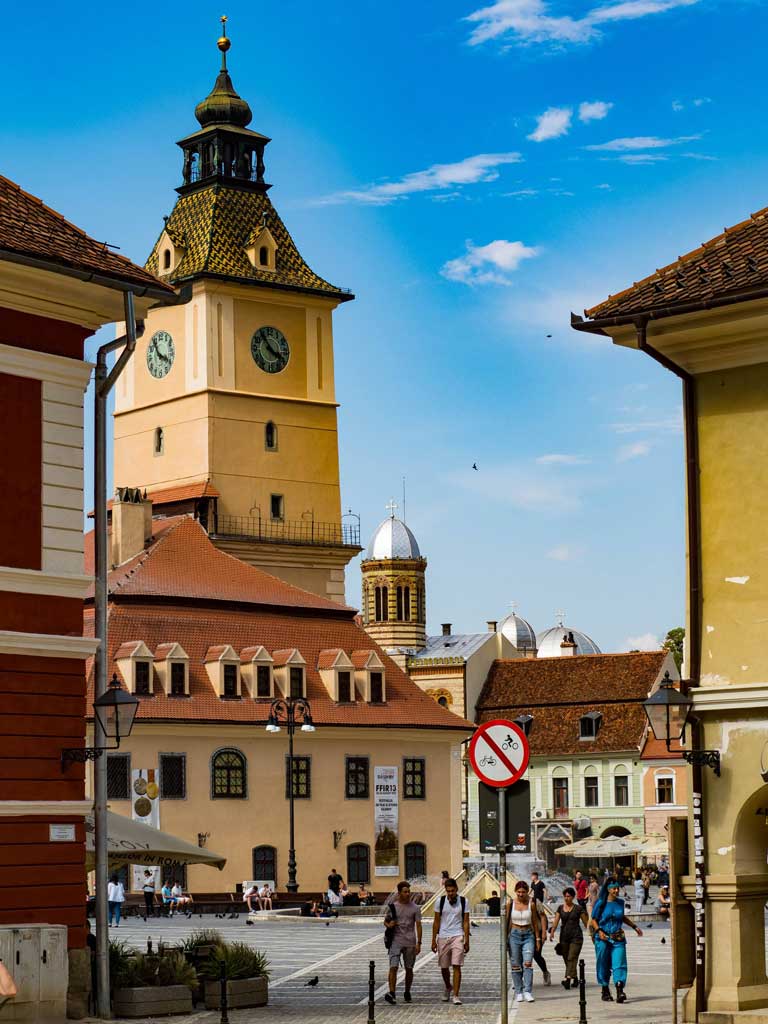
Travelling from place to place, you will discover amazing cities while uncovering their past and place in the history of Romania.
Sighisoara, Brasov, and Bucharest is where you’ll discover amazing sites, have unique experiences, and make lasting memories.

